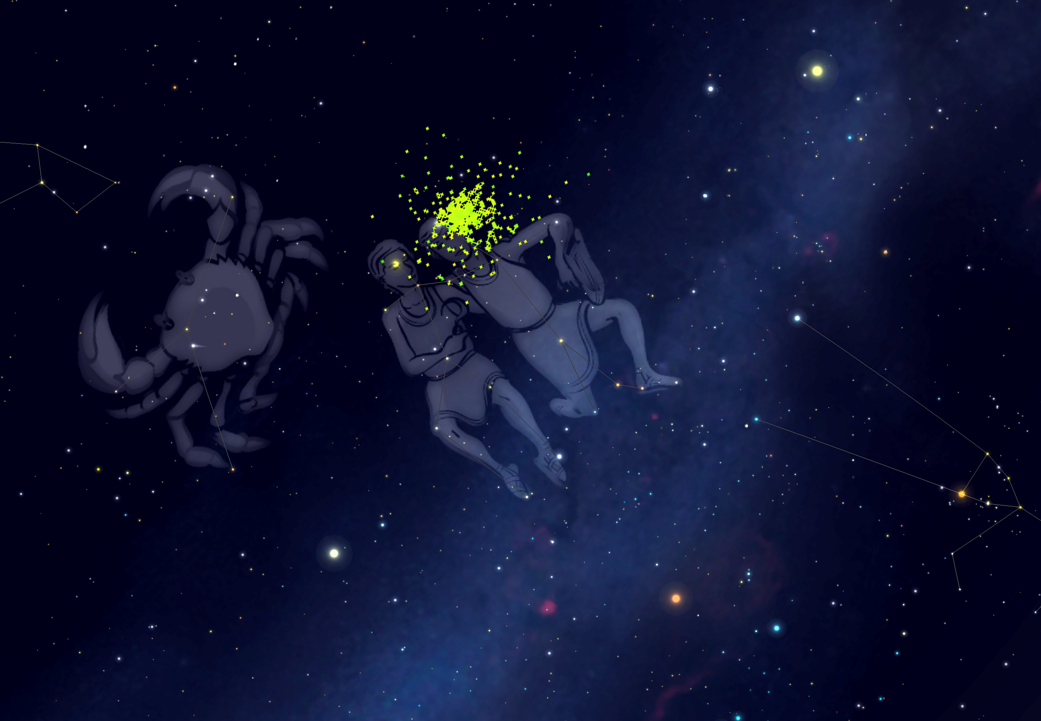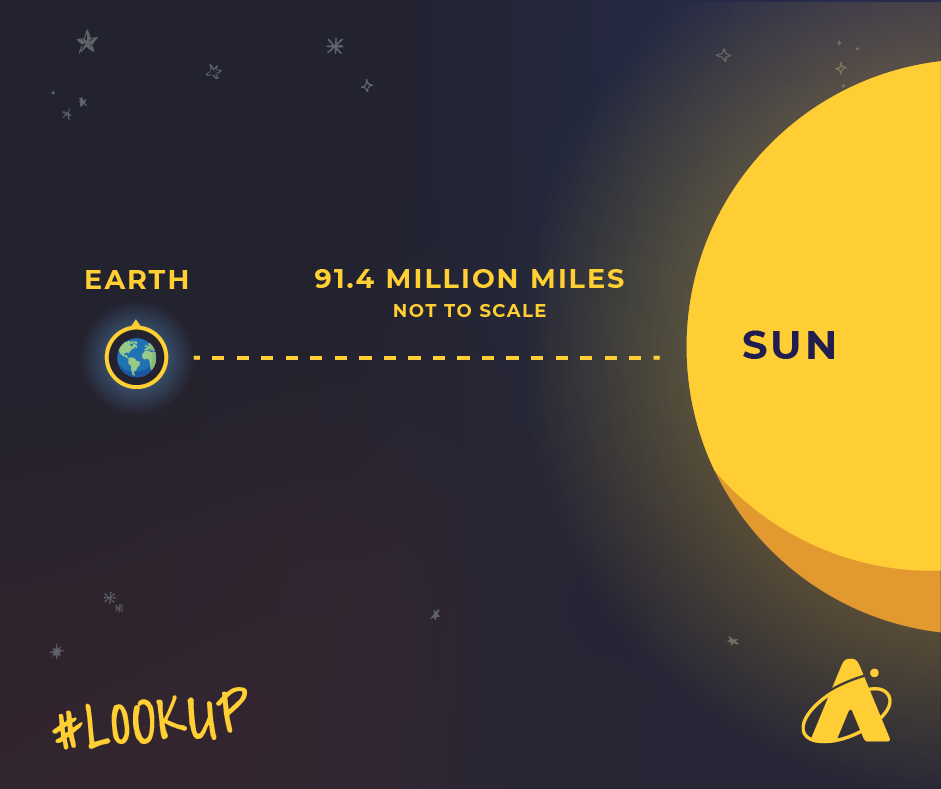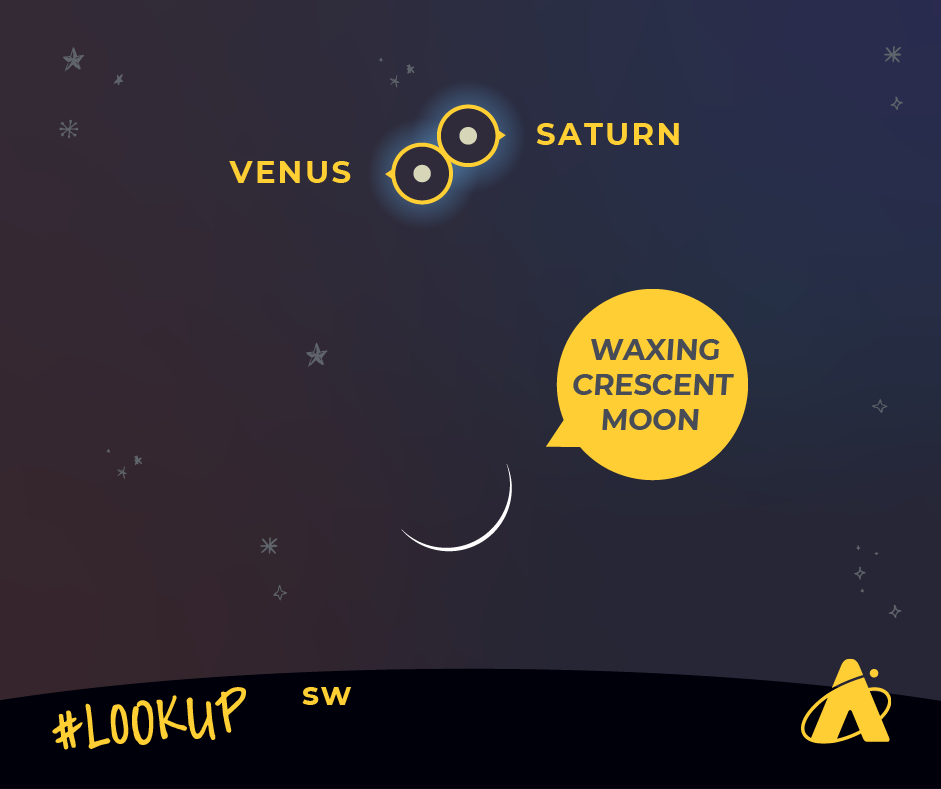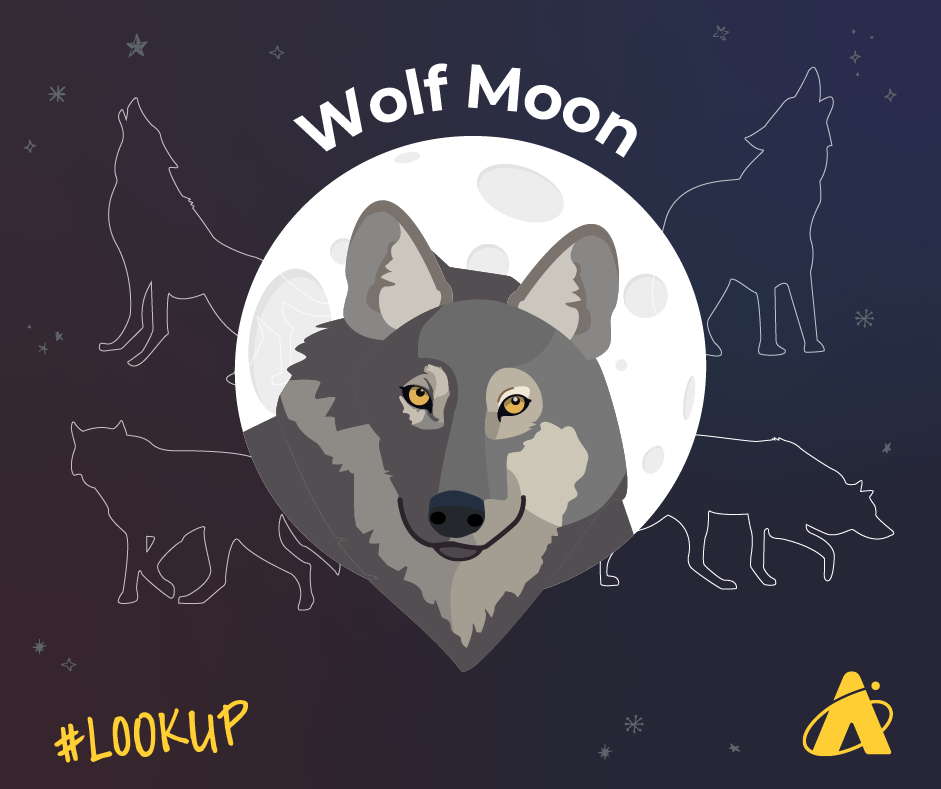Adler Skywatch: January 2023

Header Image: An illustration of the December 2021 Geminid meteor shower. Image Credit: NASA
Editor’s Note: This blog has been updated to include information about Comet C/2022 E3 (ZTF)
2023 opens with Earth’s closest approach to the Sun and a potential showy meteor shower. These events and more are among the sky highlights of this month, January 2023. Here’s your monthly stargazing guide to view these upcoming celestial events.
Hey There, Comet C/2022 E3 (ZTF)
The Quadrantids meteor shower peaks this month during the night of January 3 through the early-morning darkness of January 4. Estimated peak meteor counts range from 40–100 meteors per hour if skies are clear and dark. Unfortunately, a waxing gibbous Moon is expected to block fainter meteors from view during the peak. The Moon and a very short (hours-long) peak window for the Quadrantids mean you may see far fewer meteors, even if you are away from city lights. Your best chance of seeing the Quadrantids is shortly before dawn on January 4, when the bright Moon is low in the sky and far away from the shower’s radiant point.
The radiant is in the constellation Boötes, near Alkaid—the last star in the handle of the Big Dipper. So why isn’t the meteor shower named after Boötes, as is usually the case for meteor showers? It was named after an obsolete constellation, Quadrans Muralis, which included stars from Boötes and the nearby constellation Draco. In 1930—the year the Adler Planetarium first opened to the public—the International Astronomical Union officially published a list of 88 modern constellations that are still used by astronomers today. The list did not include Quadrans Muralis.
Sun and Moon at their Closest
The morning of January 4 is the year’s perihelion—the point in Earth’s orbit when it’s closest to the Sun, about 91.4 million miles away. The aphelion for 2023, when the Sun will be furthest from Earth for the year, won’t occur until the afternoon of July 6.

The next supermoon is on January 21, 2023. At roughly 221,000 miles away, it’s the closest supermoon for a few years. However, don’t go looking for it. A supermoon is informally defined as a Full Moon or New Moon that occurs around perigee–the point in the Moon’s orbit when it’s closest to Earth. The supermoon on January 21 is a New Moon, so you won’t be able to see it.
Planets After Sunset
About 45 minutes after sunset this month, look southwest just above the horizon to spot Saturn. Now look above and slightly left of Saturn—a little less than 40 degrees—to see the bright planet Jupiter. As the days pass, Saturn gets closer to the horizon during the hour after sunset, so close that it may be difficult to see unless you have a clear view of the horizon.
By mid-month, Venus, the brightest planet, becomes visible in the early-evening sky. On January 21, Venus appears only a degree below Saturn. On January 22, the two planets will appear less than a quarter of a degree apart. On January 23, Venus appears about a degree above Saturn, with a very slim waxing crescent Moon only a few degrees above and to the left of Venus. On January 24, that crescent Moon appears between Venus and Jupiter, and by January 25, Jupiter appears very close to the dark edge of the crescent Moon.

Saturn sets in the west-southwest about one–two hours after the Sun. Jupiter sets at about 11:00 pm CST at the start of the month and by month’s end it will set around 9:00 pm. Venus sets between 6:00 pm CST early in the month. By the end of the month, Venus will set at about 7:00 pm.
Mars Up All Night
With Jupiter so easy to spot in the southwest in early-evening twilight, look about 60 degrees to its left and a little higher in the sky to find the planet Mars. It’s not as brilliant as it was last month, but it’s still brighter and distinctively reddish compared to the surrounding stars. This month, Mars hangs between the v-shaped Hyades asterism and the small twinkly Pleiades star cluster. The evening of January 30 and morning of January 31, Mars appears very close to the dark edge of a waxing gibbous Moon. This month, Mars sets in the west-northwest about 5:00 am CST at the start of the month and about 3:00 am by month’s end.
Good Morning Mercury
The last week of the month, early risers may get a chance to see the hard-to-spot planet Mercury. It’s hard to spot because it’s physically close to the Sun, and you’ll need a clear sight-line to the horizon to see it. January 23–31, try looking for it very low in the southeast about 45 minutes before sunrise. It may not get even as high as ten degrees up before it fades in dawn’s glow.
Moon Phases
Full Moon: January 6
Last Quarter Moon: January 14
New Moon: January 21
First Quarter Moon: January 28

Please note that these descriptions are for the Chicago area, using Central time.
Subscribe To Skywatch Wednesday This January!
Tour the night sky with the Adler Planetarium’s Theaters Manager Nick, who uses cutting edge visualizations, NASA images, and astrophotography to show you what you can see in the night sky throughout the year.
Check out our latest episode for an astronomical tour of the 2023 winter night sky.
Learn From Our Astronomy Educators
Watch exclusive live episodes of Sky Observers Hangout this January! Learn how to observe upcoming cosmic happenings, enhance your astrophotography skills and see celestial objects through a telescope virtually with our astronomy educators. Check out Michelle and Hunter’s latest hangouts during the Mars Occultation and the Lunar Eclipse!






